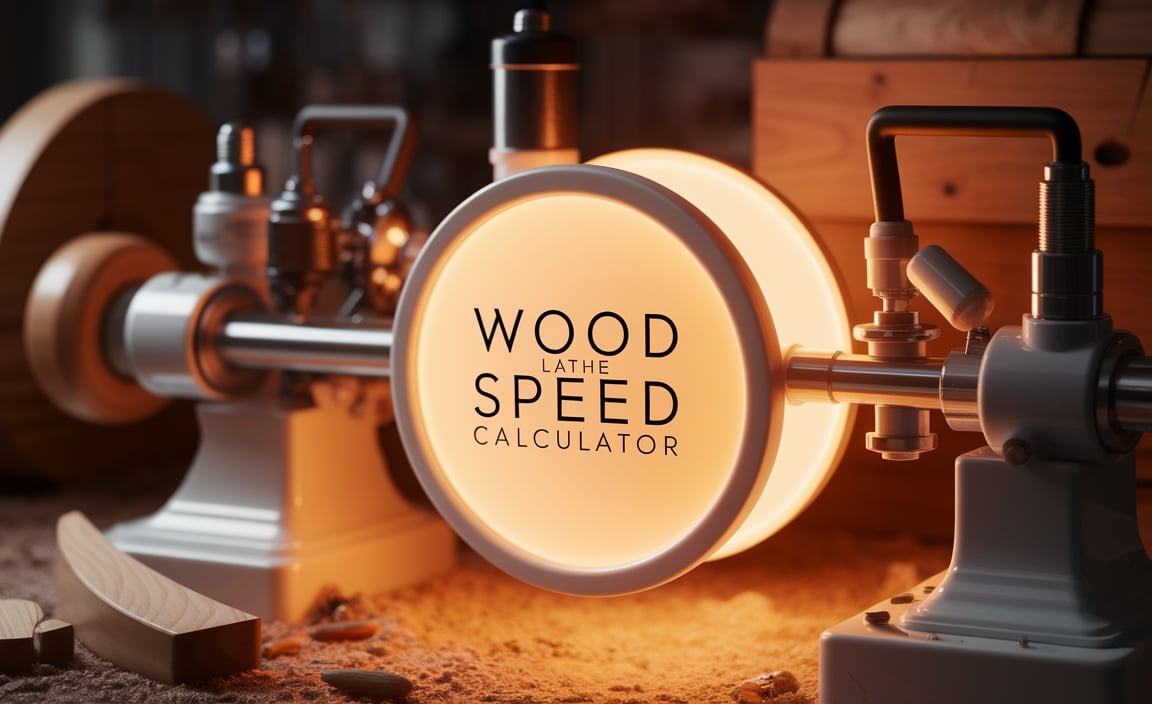Quick Summary: Keep your cordless nailer working like new with regular cleaning! This guide offers simple, step-by-step tips to effectively clean your cordless nail gun, focusing on sensors and all key areas for optimal performance and longevity.
Hey there, fellow DIYers and woodworkers! Jack Shaffer here, your go-to guy for all things nail guns.
Ever had your cordless nailer act up? Maybe it’s not firing as strong, or it’s jamming more often than usual. Most of the time, this points to one simple thing: it needs a good cleaning! It’s easy to overlook, but keeping your cordless nail gun clean is one of the best ways to ensure it performs reliably and lasts for years. Don’t worry if you’ve never cleaned one before; it’s not as complicated as it might seem. We’ll walk through it together, making sure every part, especially those crucial sensors, gets the attention it deserves.
By the end of this guide, you’ll have a clean, happy nailer ready for your next project. Let’s get those tools sparkling!
Table of Contents
Why Cleaning Your Cordless Nail Gun Matters
Your cordless nail gun is a fantastic tool, offering freedom from air hoses and compressors. But like any tool that deals with mechanical action and dust, it can get dirty. This dirt and debris can cause all sorts of problems, from inconsistent firing to complete breakdowns. Regular cleaning isn’t just about making it look pretty; it’s about ensuring safety and performance.
Think of it like your car. Regular maintenance keeps it running smoothly. Your nail gun is no different! A clean tool is a safe tool and an efficient tool. It means fewer frustrating moments on the job and more completed projects with satisfying pings! We’ll focus on keeping every part of your cordless nailer in top shape, especially the delicate sensors that are key to its operation.
Understanding Your Cordless Nail Gun’s Anatomy (for Cleaning Purposes)
Before we dive into cleaning, let’s take a quick look at the parts we’ll be focusing on. Knowing what’s what makes the cleaning process much easier.
- Nose/Tip: This is where the nail comes out. It’s prone to dust, wood debris, and sometimes even nail fragments.
- Magazine: This holds the nails. Dirt here can cause feeding issues.
- Battery Compartment: Keep this area clean to ensure a good connection.
- Air Vents/Cooling Fins: These help prevent overheating. Blocked vents mean your tool works harder.
- Sensors (Depth and Safety): These are critical for proper function. They tell the gun when to fire and how deep to drive the nail. Cleaning these tips for cleaning cordless nail gun sensors is paramount.
- Trigger Mechanism: While we won’t be fully disassembling it, keeping the exterior clean helps prevent grit from getting inside.
Essential Tools for Cleaning Your Cordless Nail Gun
You don’t need a fancy toolkit to clean your cordless nail gun. Most of what you need, you probably already have around the house. Here’s a simple list:
- Compressed Air (Canned Air or Air Compressor): Excellent for blowing out dust and debris from hard-to-reach places.
- Soft Cloths: Microfiber cloths are great as they won’t scratch surfaces.
- Cotton Swabs (Q-tips): Perfect for detailed cleaning, especially around sensors and small crevices.
- Mild Detergent or Tool Cleaner: A little bit of soap and water or a dedicated tool cleaner can tackle grime.
- Small Brush: A soft-bristled brush (like an old toothbrush) or a detail brush can help loosen stubborn dirt.
- Lubricant (Optional, depending on manufacturer recommendations): Some tools might recommend a light oil on specific parts. Always check your manual!
- Safety Glasses: Always protect your eyes when working with tools and blowing out dust.
Step-by-Step Guide to Cleaning Your Cordless Nail Gun
Ready to get your nailer spick and span? Follow these steps. Remember, safety first – always ensure the battery is removed and the tool is not armed before you start!
Step 1: Safety First – Disconnect Power
This is the most crucial step. ALWAYS remove the battery pack from your cordless nail gun before you begin any cleaning. This ensures the tool cannot accidentally fire while you’re working on it.
Step 2: Initial Dust and Debris Removal
Grab your compressed air can or air compressor. Use short, controlled bursts to blow away loose dust, sawdust, and debris from the entire exterior of the nail gun. Pay special attention to vents, seams, and the area around the magazine.
For stubborn debris, a soft brush can help loosen it before you blow it away. Gently brush areas, then use compressed air again.
Step 3: Cleaning the Nose and Driving Blade Area
This area takes a lot of abuse. Wipe down the nose with a clean, soft cloth. If there’s stubborn residue, dampen a cloth slightly with water or a mild cleaning solution (make sure it’s not dripping wet!).
Use cotton swabs to carefully clean around the driving blade mechanism, ensuring you don’t force anything. If you can see any metal fragments or hardened debris, use a soft brush to gently dislodge them. Be very delicate here; this is a precision part.
Step 4: Cleaning the Magazine
Open the magazine and inspect it for any dust, wood shavings, or bent nails. Wipe the inside of the magazine with a dry cloth. If it’s particularly grimy, use a slightly damp cloth, but make sure it dries completely before reassembling or using again. A clean magazine ensures nails feed smoothly.
You can extend the feeder arm and clean along its path too. This helps prevent jamming.
Step 5: Cleaning the Vents and Battery Compartment
Use compressed air to blow out any dust that might have accumulated in the air vents or cooling fins. Blocked vents can cause your tool to overheat, reducing its efficiency and lifespan.
Wipe down the exterior of the battery compartment and the contact points on the tool with a dry cloth. Make sure there’s no dust or debris that could interfere with the battery’s connection.
Step 6: Focusing on the Sensors – Tips for Cleaning Cordless Nail Gun Sensors
This is where precision matters. The sensors, particularly the depth adjustment sensor and the safety contact trip, are vital for your nail gun working correctly. They can get clogged with sawdust or sticky residue.
- Locate the Sensors: The safety contact trip is usually at the tip of the nose. The depth adjustment mechanism is typically a wheel or dial somewhere on the gun.
- Gentle Cleaning: Use dry cotton swabs to gently clean the area around these sensors. Don’t apply excessive pressure or use wet materials directly on sensitive electronic components if your model has them.
- Compressed Air for Vents: Even small sensor vents can get blocked. A quick puff of ‘canned air’ can clear these effectively.
- Avoid Solvents: Unless your manual specifically advises it, avoid using strong cleaning solvents near the sensors, as they can damage plastic components or electronics.
A clean sensor ensures your nail gun fires only when it’s supposed to and that the depth control is accurate. For more advanced cordless nail guns that use electronic sensors, refer to a reputable source like Family Handyman’s guide to cleaning nail guns for additional insights on component care.
Step 7: Exterior Wipe Down
Once the more critical areas are clean, give the entire exterior of your nail gun a good wipe-down with your soft cloth. This removes any remaining dust and leaves your tool looking its best.
Step 8: Reassemble and Test
After cleaning, ensure all parts are dry. Reinsert the battery pack. Before firing into wood, it’s a good idea to test fire it a couple of times into a scrap piece of material. This confirms everything is working correctly after your cleaning session.
When to Clean Your Cordless Nail Gun
How often should you perform this cleaning routine? It really depends on how much you use your nailer and the conditions you’re working in.
Here’s a general guideline:
| Usage Frequency | Cleaning Schedule | Notes |
|---|---|---|
| Heavy Use (Daily/Weekly) | After each major project or every few uses | Dust and debris build up quickly. |
| Moderate Use (Monthly) | Every few months or after a significant project | Performance may start to dip. |
| Light Use (Occasional) | Once or twice a year, or if you notice issues | Still good practice to check and clean before storage. |
The best indicator? If your nail gun starts acting up – misfiring, jamming, or poor nail depth – it’s definitely time for a clean. Don’t wait for a major problem to occur!
Troubleshooting Common Issues After Cleaning
Sometimes, even after cleaning, a nail gun might show strange behavior. Here are a few things to check:
- Nails Not Feeding: Ensure the magazine is fully loaded, the feeder arm is unobstructed, and there’s no debris preventing smooth nail travel.
- Misfiring or Weak Driveng: Double-check the battery charge. Also, ensure the nose isn’t clogged and the safety contact trip is clear and functioning.
- Depth Adjustment Not Working: Verify that the depth adjustment mechanism is clean and free of debris. Sometimes, a small piece of wood can lodge in the adjustment screw.
- Tool Not Firing At All: This could be a safety mechanism issue, a dead battery, or a more serious internal problem. Ensure the battery is seated correctly and try firing on a softer surface.
If problems persist, consult your nail gun’s user manual. For more in-depth troubleshooting, resources like ToolTizen offer helpful tips for common cordless tool issues.
Frequently Asked Questions (FAQ)
Q1: How often should I clean my cordless nail gun?
A1: Aim to clean it after every major project, or more frequently if you use it heavily or in dusty conditions. For less frequent use, clean it at least once or twice a year. If you notice performance issues, it’s definitely time.
Q2: What’s the best way to clean the sensors?
A2: Use dry cotton swabs for gentle cleaning. Compressed air can also be effective for blowing dust from sensor vents. Avoid harsh chemicals or excessive moisture near sensors.
Q3: Can I use WD-40 to clean my cordless nail gun?
A3: It’s generally not recommended to use WD-40 or similar lubricants inside a cordless nail gun unless specifically instructed by the manufacturer. They can attract dust and gunk up mechanisms. Stick to manufacturer-approved lubricants if any are needed.
Q4: My nail gun is jamming. What should I do?
A4: First, remove the battery. Then, clear any jammed nails. Clean the magazine and the nose area. Ensure nails are loaded correctly and are the right size for your gun. A clean tool is less prone to jamming.
Q5: Do I need to lubricate my cordless nail gun?
A5: Most modern cordless nail guns are designed to be maintenance-free and don’t require lubrication. However, always check your user manual. If lubrication is recommended, use only the type and amount specified by the manufacturer.
Q6: What if cleaning doesn’t fix the problem?
A6: If you’ve cleaned your nail gun thoroughly and it’s still not performing correctly, there might be a more serious internal issue. Consult your user manual for advanced troubleshooting or contact the manufacturer’s customer support. For detailed technical aspects, official manufacturer sites often have service guides, for example, DeWalt’s support page can be a valuable resource for their tools.
Conclusion
There you have it! Keeping your cordless nail gun clean doesn’t have to be a chore. By following these simple steps, you can ensure your tool stays in top working condition. Regular cleaning, with a special focus on those critical sensors, means fewer interruptions, better project results, and a longer lifespan for your trusty nailer.
Remember, a clean tool is a happy tool and a safe tool. So, take a little time after your next project to give it a good once-over. You’ll thank yourself the next time your nail gun fires with that smooth, powerful sound. Happy building, and happy nailing!

